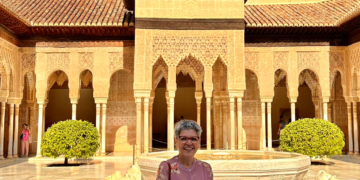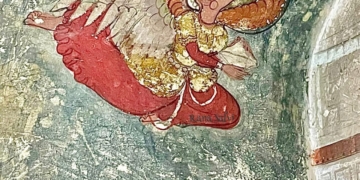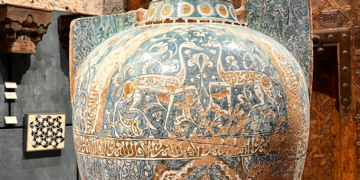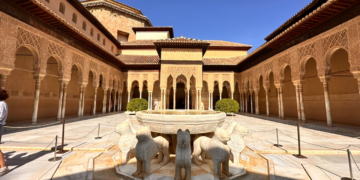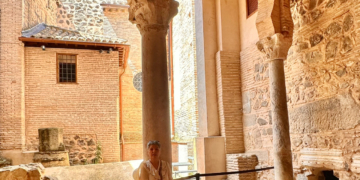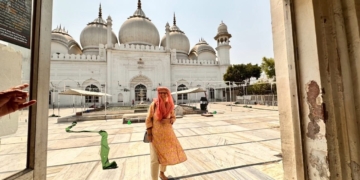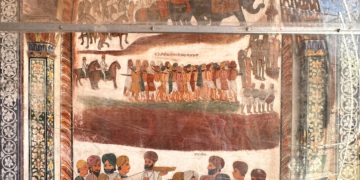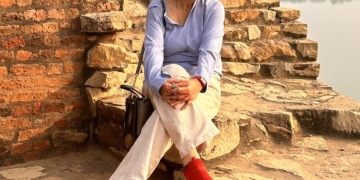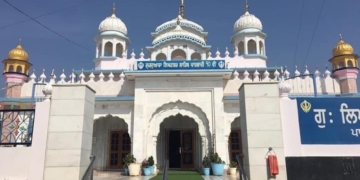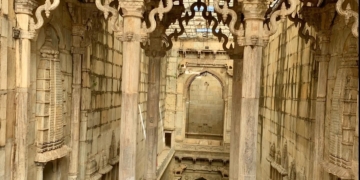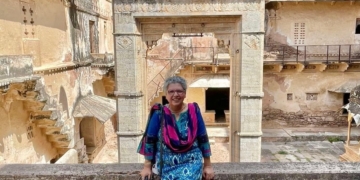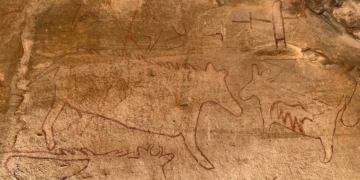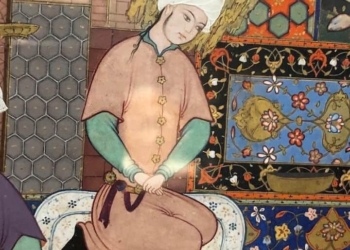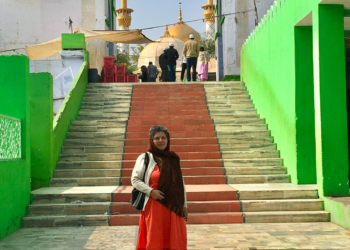
This is one of the most famous representations of #yusufzulaikha by Kamaluddin Behzad the legendary Persian painter. It is in the Cairo National Library.
The Quranic story described in 3 posts above was taken by Sufis as an allegory for ishq e majazi and ishq e haqeeqi.
18 Persian poets composed on this theme each with their own variation.
The most famous is by the 15th-century Persian Sufi poet ʻAbd al-Raḥmān Jāmī, who included it as one of the seven books in his Haft-awrang (‘Seven Thrones’).
“According to Jami, Zulaykha’s desire for Yusuf is an allegory for the soul’s search for the divine but, in keeping with prominent themes in Sufi Islam, the poem’s heady mixture of romantic and mystical love allowed for both literal and spiritual interpretations”(Merguerian and Najmabadi 1997: 497–500).

This is the story of Yusuf and Zulaikha
As given in the Quran and in Sufi Traditions. ( Two separate posts)
Yusuf was very beautiful.Yusuf was the son of Prophet Yaqub, who lived in Canaan, some thirty miles off Jerusalem. Prophet Yaqub and his twelve sons were shepherds and lived in tents. Yusuf was the eleventh son and his father’s favourite.
Prophet Yaqub would make sure that Yusuf and his younger brother always stayed near him and worked only in the house or garden, while the elder ones went into the forest to tend their sheep. Yusuf’s extreme good looks, gentle temperament and pleasant and considerate manners had sown the seeds of resentment in the hearts of his elder brothers.
One night Yusuf dreamt that eleven stars, the sun and the moon in the sky all were bowing down to him. He went to his father and described his dream.
Recognizing that a great future lay ahead of Yusuf and that his jealous elder sons would become even more hostile to his beloved son, Yaqub immediately warned him, ‘O my son! Do not tell your brothers about your dream, for they may plan to harm you.’
Yusuf in his innocence had no inkling of his elder brothers’ envy and jealousy and without heeding his father’s warning told them about his dream.
The envious brothers took permission to take him with them and decided to take this opportunity and kill him. But the eldest brother hesitated – perhaps he felt guilty at betraying their father’s trust or perhaps he had some amount of love for his brother in his heart. He suggested that instead of killing him Yusuf could be separated from his father by the simple method of throwing him into a well and leaving him there. They returned home at night lamenting their loss. ‘O Father! We are so distraught and don’t know how to break the news to you. We left Yusuf with our belongings in the forest while we went to hunt. We returned to find that a wolf had devoured him.’
As proof they gave him Yusuf’s cloak, which they had carefully stained with some sheep blood.
Meanwhile, Yusuf was saved by some merchants who sold him in the Cairo slave market bought by Al Aziz,a minister.
( Painting : David Collection)

As Yusuf grew to manhood, Zulaikha, the wife of his master, was overpowered by his charms and found it difficult to resist him. For the upright and trustworthy Yusuf, who was very conscious of the trust placed in him by his owner, resisting the advances of his owner’s wife was easy.
One day she closed the room from inside and offered herself to Yusuf. As an afterthought she put a piece of cloth on the bust of an idol saying she didn’t want her God to witness her straying from the path of fidelity to her husband. Yusuf gently disengaged himself saying that his God was present everywhere. ‘You are ashamed of the idol that neither sees nor hears you. Shall I not be ashamed of my Lord who is manifest and informed about everything?’
He turned to leave and she chased after him through her suite. Wanting to stop him, she stretched out her hand and made a grab at his shirt. But he twisted out of her grasp and she was left clutching a piece of his torn shirt. To her horror as they reached the closed door it opened and her husband and her cousin stood at the entrance. They saw a fleeing Yusuf and a distraught Zulaikha standing with a piece of torn cloth in her hand.
Left with no recourse but to save her reputation the spurned lady accused Yusuf of forcing himself on her and showed the piece of Yusuf’s shirt as proof.
A patently disturbed Yusuf denied the allegations. He was bewildered by all that had happened and kept repeating that it was she who had seduced him and not the other way round.
Aziz passed the torn piece to Zulaikha’s cousin and asked for his advice. The cousin was a wise and just man and said the shirt was the proof. If it was torn at the front it meant Yusuf had tried to seduce Zulaikha but, ‘If his shirt is torn from the back, then she has lied, and he is truthful.’
The shirt was passed around and it was found to be torn at the back, proving Yusuf’s innocence. Aziz apologized and requested Yusuf to keep the matter in confidence but such news becomes gossip in a matter of minutes and it reached the ears of the ladies who wondered why Zulaikha, an upright and intelligent woman, had been so tempted.
(Painting @metmuseum)

